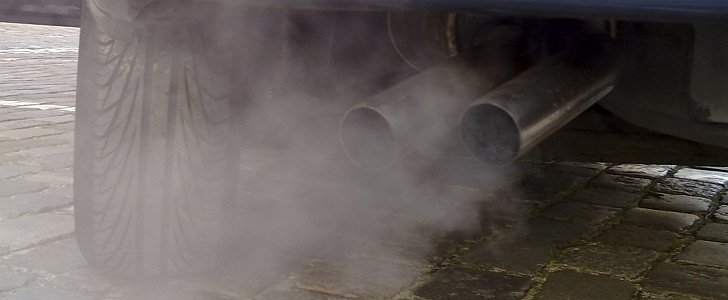Diesel engines have been quietly going under the radar for years, hiding their toxic fumes behind low CO2 emissions and the kind of fuel consumption that had cash-strapped drivers radiating with joy.
Last Fall, though, the bubble burst, and we have Volkswagen to thank for that. And I'm not even trying to be sarcastic here since I really do believe that it was a good thing it happened - you know, apart from Volkswagen itself.
People tend to get complacent and every now and again they need a wake-up call. Over in Europe, the diesel engines actually managed to surpass their gasoline counterparts: more than half of the passenger cars sold came with a diesel burner under the hood. If that's scary, just think there's also public transport or heavy trucks to be taken into account. It's not as bad in the US, but Volkswagen had big plans for its TDI engines there as well, so the Dieselgate broke out just in time.
A British journalist called Tim Johns working for BBC decided to run a little experiment. He was given a portable device that monitors air pollution by the King's College London and so Tim went out to measure just how bad for his health the air he breathed was. He did so on different days along his Bedford - London commute while using various means of transportation.
Air pollution is credited for tens of thousands of deaths across the UK, and diesel engines are considered to be the main factor. The World Health Organization hasn't stated a clear threshold over which the diesel-related particulate matter becomes dangerous (or deadly?), but it's safe to say that the lower the value, the better.
While the technique isn't entirely scientifical, Tim was very thorough. His readings are measured in micrograms per cubic meter (the average human breathes in about 11 cubic meters each day) and the experts at King's College London told him he should expect values between 0 and 3 when indoors, but the outside ones were harder to predict.
Here is what Tim's experiment revealed:
While at work in London—0.8
Sitting at home in Bedford—1.4
Walking through Bedford—1.7
Driving in Bedford—2.1
Cycling through Bedford—3.7
Cycling through London—6.5
Riding on diesel train—8.5
Riding on electric train—2.4
Waiting on train station platform—13.2
Riding in taxi in slow London traffic—19.9
There you have it: mix diesel cars with the unavoidable traffic congestions we get in the big cities, and you've got yourself the perfect recipe for cancer. The fact of the matter is that we all need to man up and find the strength to ignore all the benefits brought by diesel engines - namely their very low fuel consumption and CO2 emissions - and think about the alternatives, be they electrics, hybrids, gasoline or... pedal-power.
People tend to get complacent and every now and again they need a wake-up call. Over in Europe, the diesel engines actually managed to surpass their gasoline counterparts: more than half of the passenger cars sold came with a diesel burner under the hood. If that's scary, just think there's also public transport or heavy trucks to be taken into account. It's not as bad in the US, but Volkswagen had big plans for its TDI engines there as well, so the Dieselgate broke out just in time.
A British journalist called Tim Johns working for BBC decided to run a little experiment. He was given a portable device that monitors air pollution by the King's College London and so Tim went out to measure just how bad for his health the air he breathed was. He did so on different days along his Bedford - London commute while using various means of transportation.
Air pollution is credited for tens of thousands of deaths across the UK, and diesel engines are considered to be the main factor. The World Health Organization hasn't stated a clear threshold over which the diesel-related particulate matter becomes dangerous (or deadly?), but it's safe to say that the lower the value, the better.
While the technique isn't entirely scientifical, Tim was very thorough. His readings are measured in micrograms per cubic meter (the average human breathes in about 11 cubic meters each day) and the experts at King's College London told him he should expect values between 0 and 3 when indoors, but the outside ones were harder to predict.
Here is what Tim's experiment revealed:
While at work in London—0.8
Sitting at home in Bedford—1.4
Walking through Bedford—1.7
Driving in Bedford—2.1
Cycling through Bedford—3.7
Cycling through London—6.5
Riding on diesel train—8.5
Riding on electric train—2.4
Waiting on train station platform—13.2
Riding in taxi in slow London traffic—19.9
There you have it: mix diesel cars with the unavoidable traffic congestions we get in the big cities, and you've got yourself the perfect recipe for cancer. The fact of the matter is that we all need to man up and find the strength to ignore all the benefits brought by diesel engines - namely their very low fuel consumption and CO2 emissions - and think about the alternatives, be they electrics, hybrids, gasoline or... pedal-power.

